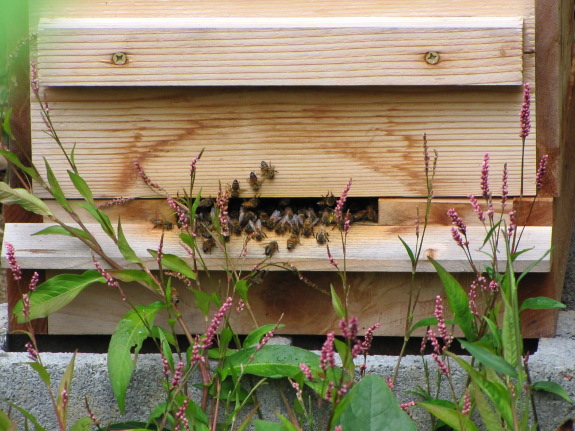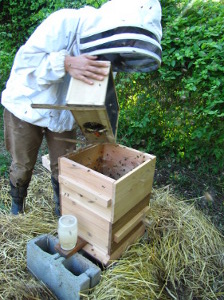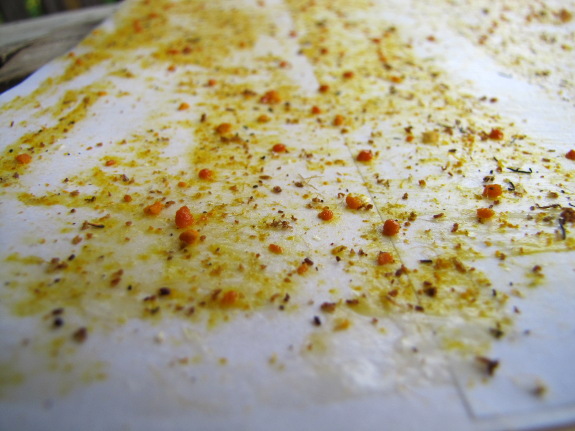
Preparing for winter with a varroa mite count

 Getting ready for cold
weather is a two-part project with our bees. The first step is to
make
sure they have enough honey, but equally important is
ensuring the bees are healthy enough to make it through the
winter. That means counting
varroa mites to see
if these blood-suckers will weaken our colony unduly.
Getting ready for cold
weather is a two-part project with our bees. The first step is to
make
sure they have enough honey, but equally important is
ensuring the bees are healthy enough to make it through the
winter. That means counting
varroa mites to see
if these blood-suckers will weaken our colony unduly.
I wasn't terribly
concerned about varroa mites this year for a variety of reasons.
Most importantly, we started with a package this spring, which (like a
hive split)
naturally causes a break in varroa mite reproduction and lowers
populations of this pest drastically. We also paid extra to get
bees from a source that doesn't treat chemically, meaning that the colonies
which can't handle mites have been bred out.

So I wasn't surprised to
find only 22 varroa mites on my stickyboard after a three day
test. There were so few mites on the board that I counted every
one rather than measuring out sample regions!
If your mite counts
don't turn up as stellar as ours, you should first estimate
how many mites you had fall per thousand bees in the hive --- it's not as big a deal
to see a lot of mites if you have a lot of bees. Next step is to use
these organic varroa mite solutions --- we've used options 1, 2,
3, 4, and 9 so far.
Now I just need to sit
back and watch the bees sock away honey, then leave them alone until
spring.
Want more in-depth information? Browse through our books.
Or explore more posts by date or by subject.
About us: Anna Hess and Mark Hamilton spent over a decade living self-sufficiently in the mountains of Virginia before moving north to start over from scratch in the foothills of Ohio. They've experimented with permaculture, no-till gardening, trailersteading, home-based microbusinesses and much more, writing about their adventures in both blogs and books.
Want to be notified when new comments are posted on this page? Click on the RSS button after you add a comment to subscribe to the comment feed, or simply check the box beside "email replies to me" while writing your comment.
- Remove comment
- Remove comment
